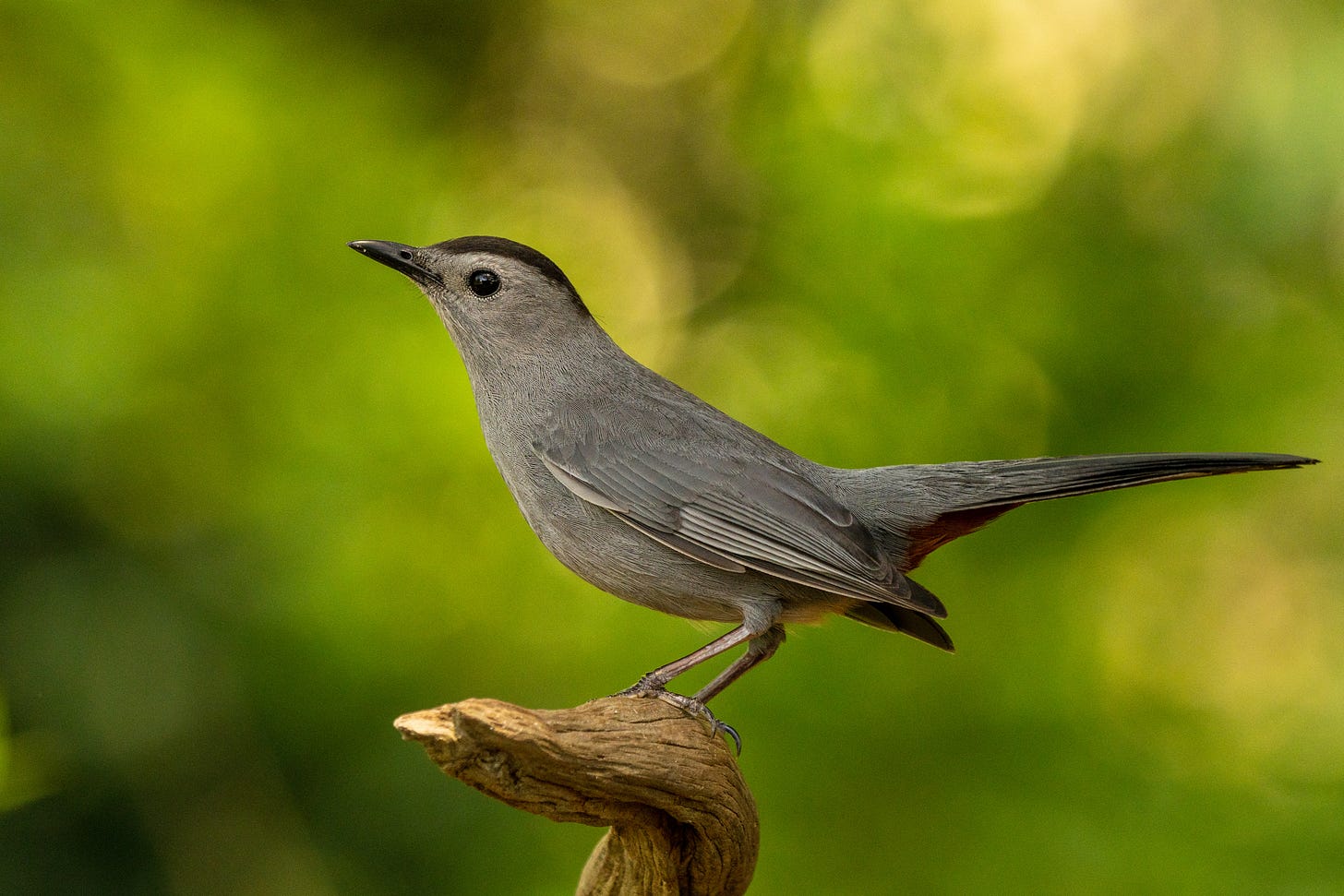Another week, another Japanese micro-season. Unlike the slavish quarters of labor hours made up by corporate humanoids, micro-seasons are straight from source, the great unity, the god-babe herself: Mama Natura. Current Japanese micro-season (out of 72!): 葭始生, or first reeds sprout. As for McGolrick Park, New York City and perhaps even larger swathes of the eastern US, we notice—
MICRO-SEASONINGS
Honeybees appear • Sparrows swarm flowering Elms • First Baltimore Orioles • First Tyrant Flycatchers • Wrens appear • Flowering trees weep • First mixed flocks of warblers • First vocalizing warblers • Allergy troubles
Did we miss anything? We’ll declare this micro-season’s “official” name at year’s end.
Great-crested Flycatcher and Eastern Kingbird are this micro-season’s tyrant flycatchers
Ovenbirds and Yellow-rumped and Black-throated Greens are this micro-season’s visiting warblers. Don’t forget to review all the warblers we expect to visit McGolrick Park this spring here
House and Carolina are this micro-season’s wrens
APRIL 27, 2024 — SATURDAY
Conditions: Crispy • Attendance: Seventy-something peepers • Vibrations: True Blue
Saturday birds: Ruby-crowned Kinglet · Laughing Gull (flyover) · Chipping Sparrow · Downy Woodpecker · Common Grackle · White-throated Sparrow … And the virtually always present in urban parks like McGolrick: Rock Pigeon, European Starling, American Robin, House Sparrow, Mourning Dove — learn these last 5 and you’ll be set to notice less common birds.
Awards: We gifted our legendary warbler gauntleteers Madeline, Puppy, Maya and Stephen warbler totes and Heavy Slime tees.
MICRO-LESSON: VIREOS
Can you believe our Newsletter Dept. wrote about butterflies last ep? We can—
But like HELLO, we have birds to learn! … Cue vireos. Like thrushes and sparrows, vireos are another bird type whose east coast emissaries are good for aspiring bird-noticers to be aware of.
Vireos’ eyes are the windows to their identifications. Memorize their characteristic markings—spectacles OR brows + under-eye baggies—and you’ll be ready to dance.
Blue-headed Vireo (learn more here) — Blue-gray head, white specs, white tummies enhanced by yellow highlights. The most common vireo of McGolrick Park. Our season’s first arrived last week.
Yellow-throated Vireo (more here) — Yellow-throated Vireos are far less common in NYC than Blue-heads. Sure are pretty through. Again: notice those spectacles.
Red-eyed Vireo (more here) — Though their eye color isn’t always noticeable, those green-yellow backs over white-ish bellies are. Combine those features with high-contrast eye stripes—browed and baggy uppers and lowers, respectively—and you’ve got yourself a Red-eyed Vireo. These guys love McGolrick in May.
Warbling Vireo (more here) — See how these dudes look like Red-eyes with less saturation? They’re uncommon in McGolrick, but can be heard singing in New York City’s bigger parks all summer long.
White-eyed Vireo (more here) — A final uncommon-to-NYC vireo is the ridiculous White-eyed. These birds’ human-like peepers, surrounded by telltale vireo specs, are gnarly. We’ve yet to notice one in McGolrick Let’s try. [UPDATE: a white-eyed vireo was seen in McGolrick Park in May ‘25, about a year after this issue was published.]
Whether or not you’re ready to commit the bird type to memory, you should at least have a slightly better sense for what Future Islands was going on about back in 2010.
All common U.S. vireo species, including west-coasters, are viewable here
The world’s vireo species are viewable here
Vireo Sounds: Red-eyed, Blue-headed, Yellow-throated, Warbling, White-eyed
Last note: Vireos are just about warbler sized
ON NOTICE
Gray Catbirds
The data are clear! Gray Catbirds are coming to McGolrick Park! Observe:
Though catbirds can be found in parts of town year-round, that’s not true in McGolrick Park. So keep your animal senses turned up in May for handsome, Robin-sized, blue-gray birds rocking black Mohawks and ochre butts.
Catbirds like it low, so check underneath bushes where the leaf litter gettin’ is good
More on Gray Catbirds here
Gray Catbirds do mew like cats—so it’s not just a clever name
You can see frequency charts for all of McGolrick Park’s 111 eBirded species here
UPDATES, ANNOUNCEMENTS, REQS
BANGS GLASS WITH UTENSIL … AHEM !
Attention early-wormies and later-birdsters! For the run of May, in addition to our usual Saturday, 9am walks, we’ll host McGolrick Bird Club sessions
Saturdays at 3:30pm (‘til whenever)
Monday, Tuesday and Wednesday mornings. These ~hourlong sessions will start at 6:30am. As Mary O. says: good morning, good morning, good morning. The whiteboard’ll be out and updated those days. So if you can’t make it, have a look-see
Also! A few free, near-flung Sunday Walks coming up:
Just today and tomorrow left to nerd touch with a purpose. Help us cap off the City Nature Challenge by, instead of having Sunday scaries, having the Sunday aware-ies ..😑.. (Sorry.) For real though, log as many floral and faunal specimens in McGolrick Park as you can. Biggest MBC contributor gets a prize. Photo ID instructions here
Lastly — On Saturday, May 25th, our friends over at Gumtree Golf & Nature Club are very likely gonna tag along on our regularly scheduled walk. There’ll be doodads, merch, and very probably some baddie birdies












